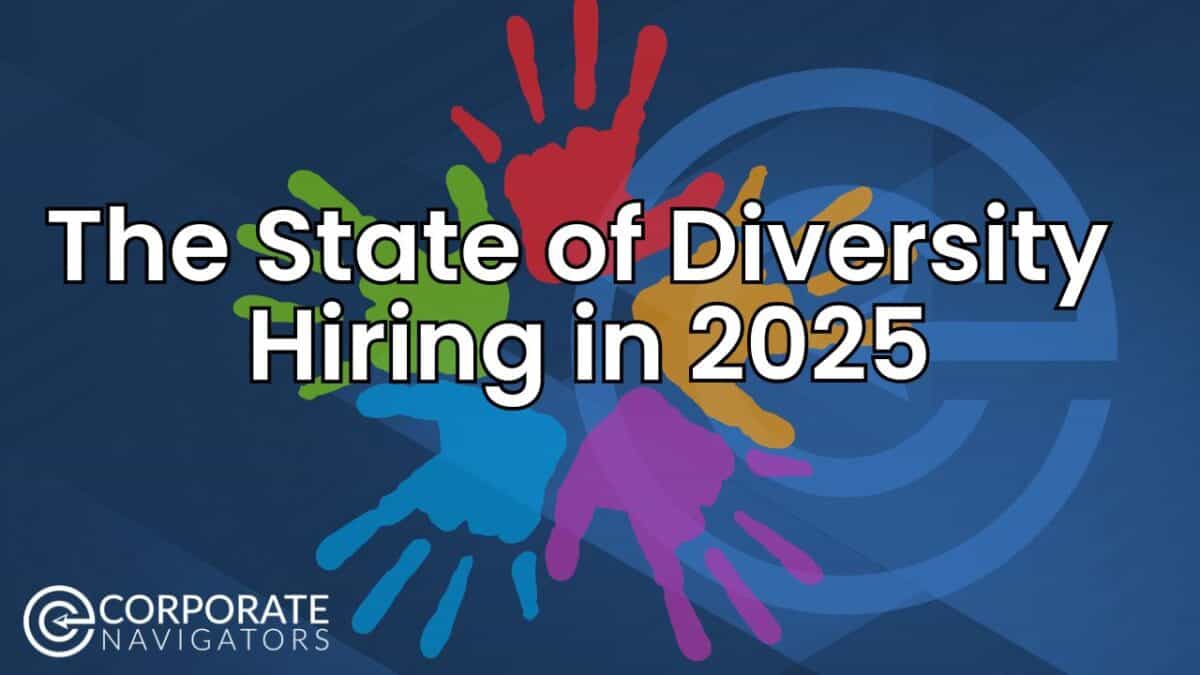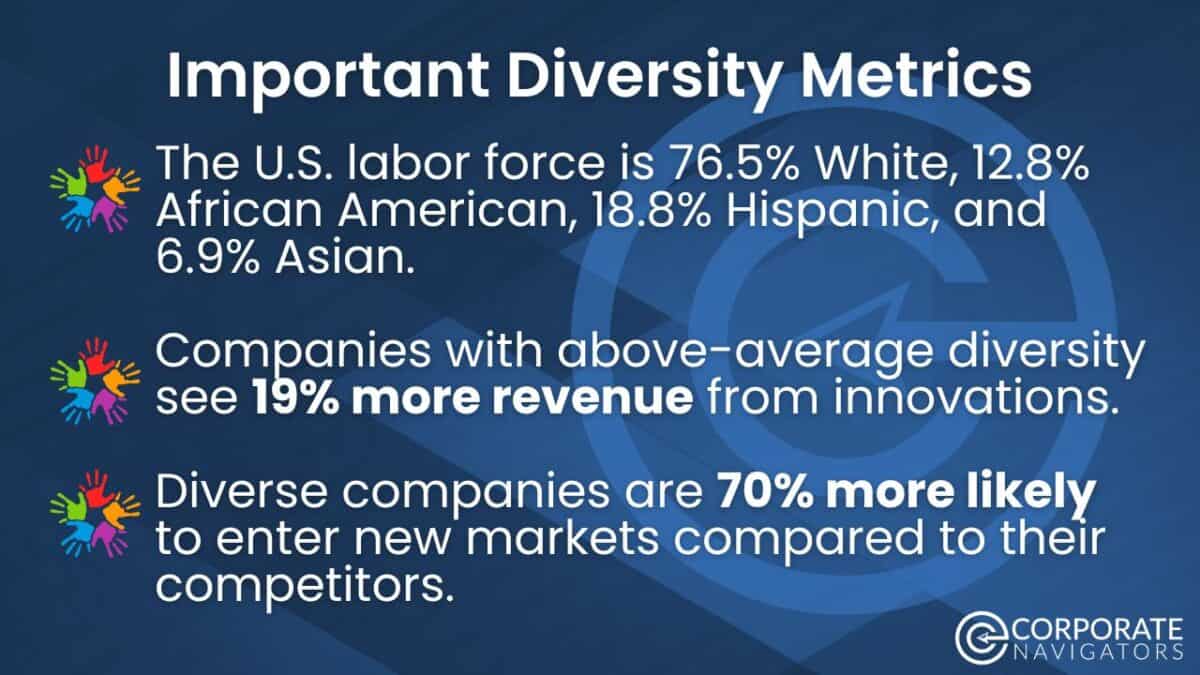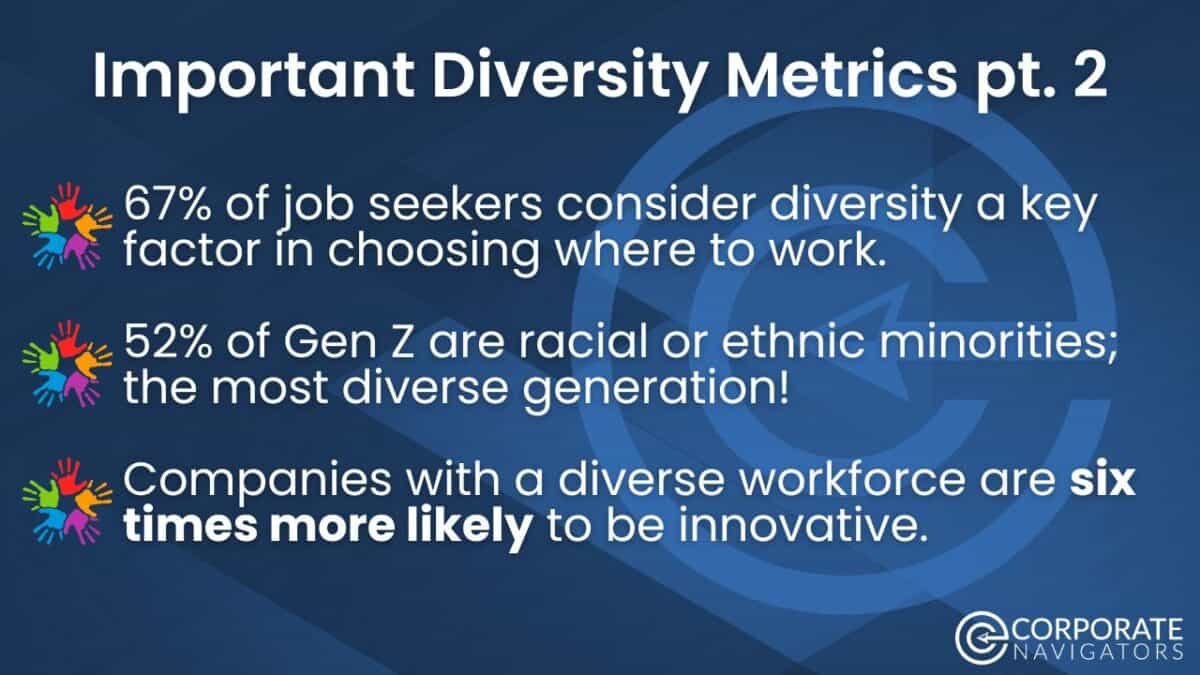
Table of Contents
The State of Diversity Hiring in 2025
DEI has been a hot topic this year, as companies have been making policy shifts away from DEI initiatives (Target, Walmart) or doubling down on them (Costco). Recent executive orders have mandated federal organizations to no longer pursue diversity hiring goals or promote DEI in the workplace.
Meanwhile, in the private sector, diversity recruiting is overall still a personal decision, though it’s under broader scrutiny. While there are clear benefits to being inclusive and diverse, such as increased employee retention and less burnout, it is up to each company in the private sector to prioritize diversity in their hiring process.
As we are a few months into 2025, it’s a good time to check on the state of diversity hiring and highlight some key statistics behind hiring people of diverse backgrounds. Therefore, every reader can have a better idea of how to make optimal hiring decisions that align with their values and abide by current regulations.

Important statistics on diversity hiring in 2025:
- According to the most recent data from the Bureau of Labor Statistics, the U.S. labor force is 76.5% white, 12.8% Black or African American, 18.8% Hispanic or Latino, and 6.9% Asian.
- Women make up 46.9% of the U.S. civilian labor force.
- Companies with above-average diversity see 19% more revenue from innovations.
- Diverse companies are 70% more likely to enter new markets compared to their competitors.
- 67% of job seekers consider diversity a key factor in choosing where to work.
- 52% of Gen Z are racial or ethnic minorities; the most diverse generation yet!
- Companies with a diverse workforce are six times more likely to be innovative.
- 92% of business leaders agree that a strategic workforce education program should help an organization achieve its diversity and inclusion goals.
As private sector companies navigate how they craft their DEI policies this year, understanding statistics like this can be helpful. It is up to each organization to determine if investing in diverse talent and fostering an environment where workplace diversity is celebrated aligns with their goals.
Diversity Hiring in 2025: Key Takeaways
When it comes to inclusive hiring practices in 2025, the landscape is complex and evolving. Here are some key highlights to note as companies navigate their workplace culture this year:
Shifting Landscape: Recent executive orders have introduced significant changes to DEI initiatives, primarily targeting federal contractors and agencies. While these changes don’t directly affect private employers, they signal broader scrutiny of DEI programs across all sectors.
Continued Importance: Despite challenges, many companies still recognize DEI as a business imperative. This can be related to a variety of factors, such as the objective benefits of DEI policies and the need to recruit Gen Z, which is highly supportive of DEI initiatives. Research shows that diverse teams are more likely to outperform their peers financially, and DEI remains a key factor in talent attraction and retention.
Mixed Approaches: Some high-profile companies have announced scaling back of DEI commitments, following political trends. However, new research suggests that many companies are maintaining their DEI efforts, with nearly half of surveyed companies indicating they will continue their programs.
Focus on Skills-Based Hiring: There’s a shift towards skills-first hiring models, as resumes prove to be more untrustworthy as time goes on. This can open doors for underrepresented groups who may lack traditional credentials but possess the necessary skills and competencies.
Emphasis on Inclusion and Belonging: Some companies are adjusting their language, moving from “Diversity, Equity, and Inclusion” to “Inclusion and Belonging,” reflecting a nuanced approach to workplace culture.
Technology and Data-Driven Approaches: Companies are increasingly using AI-powered hiring tools with bias mitigation capabilities and leveraging data analytics to track progress and identify gaps in their DEI efforts.
Overall, while the DEI landscape in private sector hiring is facing some headwinds, many companies continue to prioritize these initiatives, adapting their approaches to navigate the current political and social climate. It is up to each organization to assess its training programs and decide what its ideal work environment would be like. If anyone has questions about how to navigate this dynamic time, consulting a legal professional is the best course of action.

Navigating Diversity Hiring and More in 2025
As we look ahead to the remainder of 2025 and beyond, the landscape of diversity hiring continues to evolve in response to societal shifts, technological advancements, and changing workforce demographics.
While challenges persist, the data clearly demonstrates the tangible benefits of fostering diverse and inclusive workplaces. Companies that prioritize DEI initiatives are not only more likely to innovate and capture new markets but also to attract and retain top talent in an increasingly competitive job market.
The statistics highlighted in this article underscore the importance of diversity as a driver of business success. With 67% of job seekers considering diversity a key factor in their employment decisions and companies with diverse workforces being six times more likely to innovate, organizations that fail to adapt risk falling behind their more inclusive competitors.
As we navigate the complexities of DEI in 2025, it’s clear that there’s no one-size-fits-all approach too. Each company must thoughtfully craft policies that align with its values, goals, and legal obligations.



